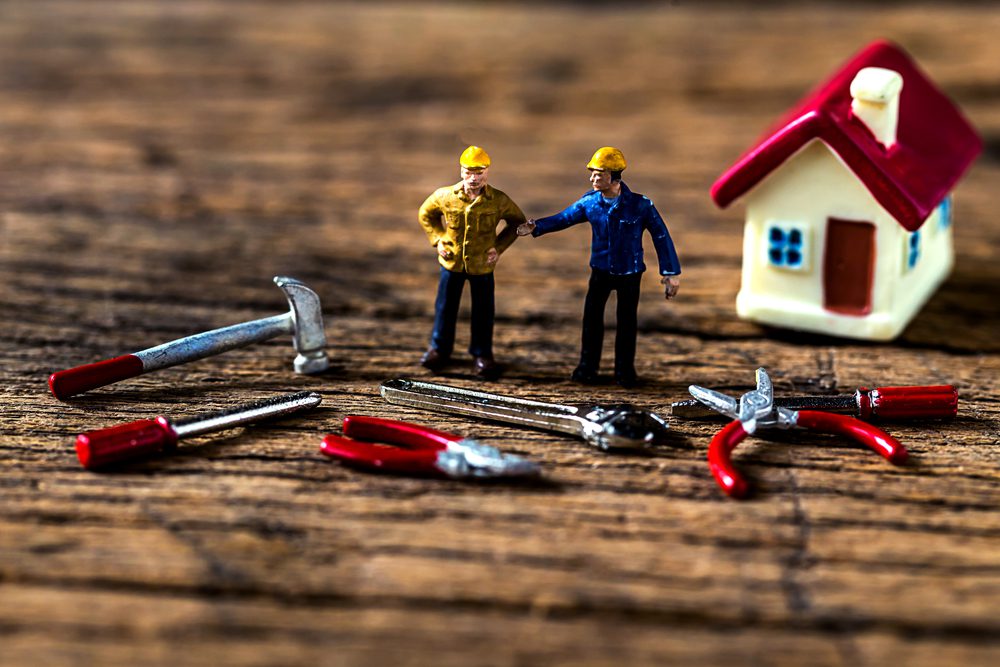Escrow holdback for repairs is an amount of money withheld from the seller’s proceeds to cover necessary repairs. In this arrangement, funds are set aside in a secure account until the repairs are completed.
In real estate transactions, escrow holdback for repairs is a common practice where a portion of the seller’s funds is retained until necessary repairs are completed. Instead of resolving repair issues before closing the sale, this approach allows the buyer to handle the repairs after the purchase.
The amount is usually agreed upon by both parties during negotiations and is held in a secure escrow account. Once the repairs are finished, the funds are released to cover the cost. This arrangement provides a level of protection for the buyer, ensuring that the necessary repairs are completed to their satisfaction.
Table of Contents
What Is Escrow Holdback?
Escrow holdback refers to an arrangement where a portion of the proceeds from a real estate transaction is held in escrow to cover repairs. It acts as a form of protection for the buyer, ensuring that necessary repairs are completed after the closing of the sale.
The definition of escrow holdback for repairs is essentially a financial tool that allows funds to be set aside in case repairs are needed. This way, the seller is not responsible for carrying out repairs prior to the closing date.
The purpose of escrow holdback is to provide transparency and assurance to both parties involved in the transaction. For buyers, it offers peace of mind knowing that necessary repairs can be addressed without delays or additional costs. Sellers benefit from this arrangement as it protects them from potential disputes or claims related to repairs after the sale.
Overall, escrow holdback is a useful tool that offers financial security and ensures a smooth real estate transaction process.
Understanding Escrow Holdback For Repairs
Escrow holdback for repairs is an important concept to understand in real estate transactions. It is a financial arrangement whereby a portion of the funds is set aside in an escrow account specifically for repairs. This helps ensure that any necessary repairs or renovations are completed before the property is transferred to the buyer.
The amount of the holdback is typically determined based on various factors, such as the estimated cost of repairs and the agreement between the parties involved. Escrow holdback is often used instead of traditional repairs, as it offers a convenient and efficient solution for both buyers and sellers.
By utilizing escrow holdback, buyers can have peace of mind knowing that any repairs needed will be taken care of, while sellers can streamline the selling process.
The Escrow Holdback Process
The escrow holdback process involves several steps to set up an escrow holdback for repairs. First, determining repair costs is essential. Once the costs are established, creating an escrow account is the next step. An escrow agreement is then drafted, including warranty provisions.
The roles and responsibilities of the parties involved are clearly defined. The buyer has certain responsibilities, while the seller also has their own obligations. Additionally, the lender has specific responsibilities throughout the process. Following these guidelines ensures a smooth and efficient escrow holdback for repairs.
Pros And Cons Of Escrow Holdback For Repairs
Escrow holdback for repairs has its own set of pros and cons. In terms of advantages, it offers limited financial responsibility for buyers. This means that they don’t have to spend a hefty amount upfront for repairs. Additionally, escrow holdback provides flexibility in the timing of repairs.
Buyers can negotiate when the repairs will be done, giving them more control. Moreover, it offers added protection for sellers. They can rest assured that the repairs will be completed before the property changes hands. On the flip side, there are a few disadvantages to consider.
First, the closing process might be delayed due to the holdback. Second, there is a potential for disputes and difficulties surrounding the repairs. It’s important for both parties to clearly communicate and set expectations to avoid any complications. Ultimately, the decision to use escrow holdback for repairs should be carefully weighed based on individual circumstances.
Tips For Negotiating Escrow Holdback For Repairs
When negotiating escrow holdback for repairs, it is crucial to conduct thorough research on local real estate laws and regulations. By being aware of the specific guidelines and requirements, you can ensure a smooth negotiation process. Additionally, conducting a meticulous inspection of the property is essential to identify all repair needs accurately.
This will help you determine the appropriate amount to be held in escrow for repairs. When setting the holdback amount, it is crucial to be reasonable and consider the scope of work required. Including the appropriate contract clauses is also vital to protect both parties involved.
By following these tips, you can negotiate an escrow holdback for repairs successfully.
Common Challenges And How To Resolve Them
Disputes and disagreements often arise over repair issues, causing delays in completion and disbursement of escrow funds. Resolving these common challenges requires open communication and negotiation. Parties involved should address their concerns directly, seeking compromise and finding mutually agreeable solutions.
By actively listening to each other’s perspectives, misunderstandings can be avoided. Prompt action is crucial in resolving disputes, as delayed decisions can prolong the process. Additionally, maintaining transparency throughout the repair process helps to build trust and alleviate concerns. Working together to find common ground and ensuring clear communication will ultimately lead to successful resolution of escrow holdback challenges.
Remember, patience and understanding are key in navigating through these obstacles.
Escrow Holdback Success Stories
Escrow holdback for repairs has proven to be successful in various real-life scenarios. Both buyers and sellers have experienced higher satisfaction levels due to this approach. For instance, a buyer noticed several issues during the inspection, but the seller couldn’t afford to make the repairs upfront.
By utilizing an escrow holdback, the buyer and seller agreed to set aside a portion of the purchase price to cover the necessary repairs. This allowed the transaction to proceed smoothly, with the funds securely held until the repairs were completed.
In another case, the seller had already relocated and couldn’t oversee the repairs personally. With an escrow holdback, the seller felt reassured that the repairs would be completed by the buyer after closing. These success stories highlight the positive impact of escrow holdback on both buyer and seller satisfaction.

Credit: www.gcamortgage.com
Frequently Asked Questions On Escrow Holdback For Repairs
What Is The Average Escrow Holdback?
The average escrow holdback is the amount of money withheld during a real estate transaction until certain conditions are met.
What Does It Mean To Put Money In Escrow For Repairs?
Putting money in escrow for repairs means setting aside funds to cover the costs of necessary repairs to a property.
Who Holds Escrow Holdback Money?
The escrow holdback money is held by the escrow agent until certain conditions are met.
What Is An Example Of An Escrow Holdback?
An example of an escrow holdback is when a portion of funds is withheld until certain conditions are met.
Conclusion
Escrow holdback for repairs provides a practical solution for homebuyers and sellers to address potential issues discovered during the inspection process. By setting aside funds in an escrow account, both parties can rest assured knowing that repairs will be handled smoothly and efficiently after the closing.
This not only helps to streamline the transaction process but also brings peace of mind to all involved. One of the main advantages of using an escrow holdback is that it allows buyers to move forward with the purchase while still ensuring that necessary repairs are completed.
This can be particularly beneficial in cases where time is of the essence, and buyers do not want to delay the closing process. By utilizing an escrow holdback, buyers can be confident that they are protected and that repairs will be addressed promptly.
Furthermore, escrow holdbacks can also benefit sellers by providing a practical way to address repair requests. Rather than renegotiating the sales price or risking the deal falling through, a holdback ensures that repairs are taken care of without causing significant disruptions.
Utilizing an escrow holdback for repairs is a practical solution that offers protection and peace of mind to both buyers and sellers. By addressing potential issues without delaying the closing process, this approach can help facilitate smoother transactions for all parties involved.
